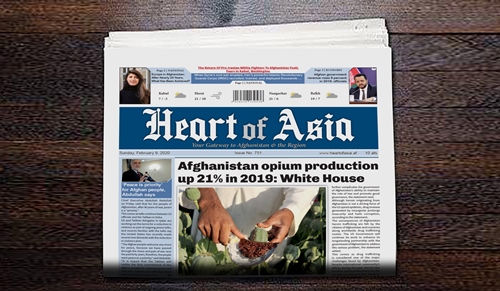Opium production in Afghanistan rose 21 percent in 2019 compared with 2018, the United States said on Friday.
In a statement on results of its annual estimate of Afghanistan opium, the White House Office of National Drug Control Policy said output of opium made from poppy seeds in Afghanistan stood at around 6,700 metric tons last year. That was compared with 5,500 metric tons in 2018.
However, areas under poppy cultivation declined by 28 percent, from 221,000 hectares to 160,000 hectares.
“Low opium prices at planting time drove the decline in cultivation,” the statement said.
“The rise in potential pure production is a direct result of favorable weather and harvesting conditions.”
Continued large-scale Afghan poppy cultivation and opium production further complicates the government of Afghanistan’s ability to maintain the rule of law and promote good governance, the statement read.
Although heroin originating from Afghanistan is not a driving force of the US opioid epidemic, drug revenue generated by insurgents prolongs insecurity and fuels corruption, according to the statement.
The consequences of Afghanistan heroin trafficking are felt by the citizens of Afghanistan and countries along worldwide drug trafficking routes. The US Government will continue its work to enhance its longstanding partnership with the government of Afghanistan to address this serious problem, the statement added.
This comes as drug trafficking is considered one of the major challenges faced by Afghanistan. Despite international community’s efforts during the past almost two decades, opium production is on the rise by passing each year. The illicit drug production is even higher than the Taliban era, when its cultivation was legal. Taliban later banned opium cultivation and its products sharply decreased before 9/11 and the ensuing invasion of Afghanistan. Some experts even tie Taliban ouster by US to their strict ban on the drug.













